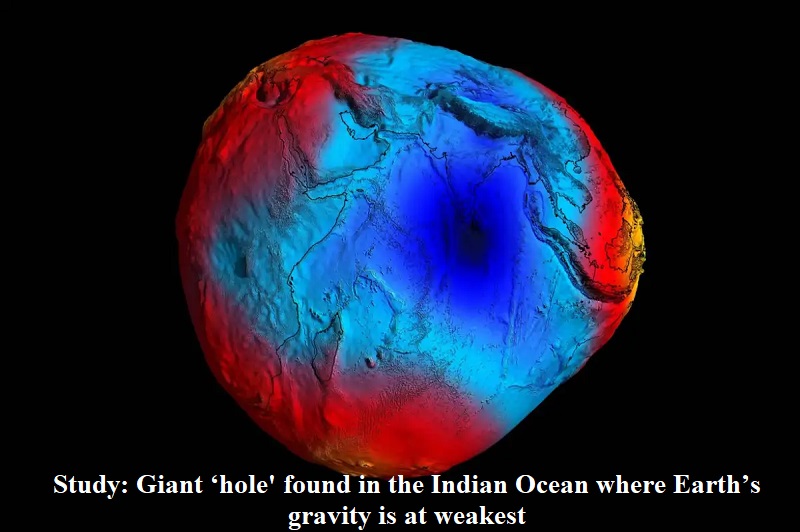
The middle of the Indian Ocean is known to have the weakest gravitational pull on Earth due to a significant “hole” in that area. This “hole” does not refer to a physical opening where water drains, but rather to a region with less mass beneath it, resulting in a weaker gravitational force compared to other parts of the planet.
Geologists Debanjan Pal and Attreyee Ghosh from the Centre for Earth Sciences at the Indian Institute of Science in Bengaluru, Karnataka, have proposed an explanation for this geological phenomenon. They suggest that the origins of the weak gravitational pull can be traced back to an ancient ocean bed that sank due to plate tectonic movements.
By studying the movements of tectonic plates and the underlying mantle over the past 140 million years, the researchers propose that the weak gravitational pull may be caused by plumes of molten rock rising from deep beneath Africa, near the sinking remnants of the ancient ocean bed.
The Earth is not a perfect sphere, and its gravitational pull varies across different regions depending on the mass distribution of the crust, mantle, and core. In the Indian Ocean, there is a significant dip known as the Indian Ocean geoid low (IOGL), which is the planet’s most prominent gravitational anomaly. The IOGL covers over three million square kilometers and is located about 1,200 kilometers southwest of the southern tip of India.
Although the dip is not visible at the ocean’s surface, it results in a lower sea level over the region due to the lower gravitational pull. The study estimates that the sea level over the hole is approximately 106 meters lower than the global average.
The discovery of the IOGL dates back to 1948, and subsequent ship expeditions and satellite measurements have confirmed its existence. However, the reason behind its presence remained unknown until now. The researchers suggest that the IOGL is caused by a unique mantle structure combined with a disturbance known as the “African blob” or the large low shear velocity province (LLSVP) beneath Africa.
According to the researchers, the African blob is likely formed by ancient remnants of seafloor from the Tethys Ocean, which existed more than 200 million years ago between the supercontinents of Laurasia and Gondwana. India, which was part of Gondwana, gradually moved northward into the Tethys Ocean, eventually forming the Indian Ocean. The presence of plumes arising from subducted slabs belonging to the old Tethys Ocean sinking into the mantle and reaching the core-mantle boundary contributes to the formation of the weak gravitational region.
The findings highlight the complex interactions between tectonic movements, mantle structures, and gravitational forces in shaping the Earth’s geoid and have provided insights into the origins of the significant gravitational anomaly in the Indian Ocean.

Post Your Comments